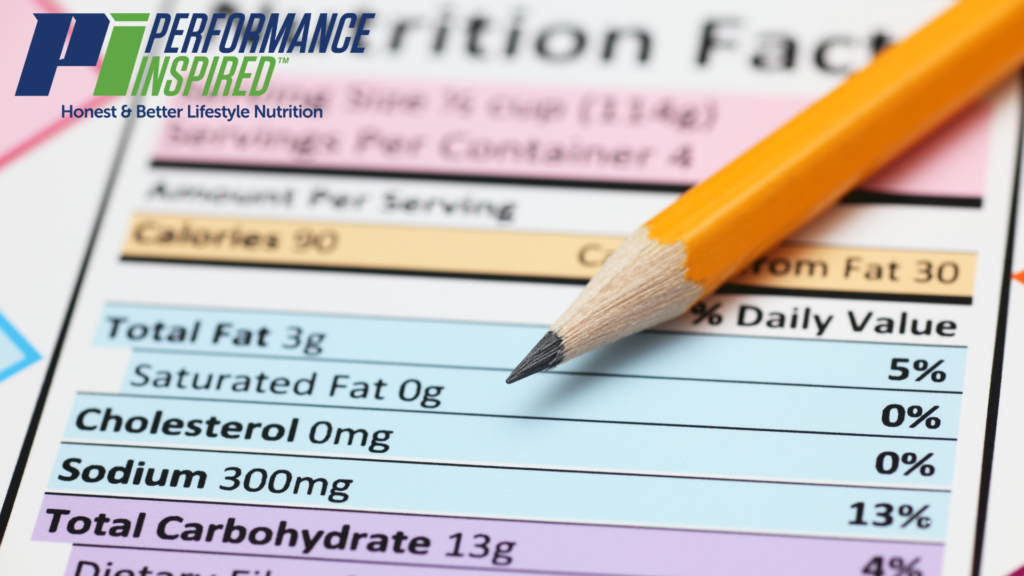How Many Carbs Should Be Consumed Each Day?

If you’ve read anything recently about nutrition or health, you’ve likely seen the word carbs pop up repeatedly. It’s a hot topic right now. People ask questions such as: Should I eat carbs? How many should I consume each day? How much is too much?
These are all great questions, so we want to offer some assistance. But first, let’s define carbs.
Carbs—short for carbohydrates—are a “type of macronutrient found in many foods and beverages.” According to the Mayo Clinic, “Most carbs occur naturally in plant-based foods, such as grains. Food manufacturers also add carbs to processed foods in the form of starch or added sugar.”
It’s important to understand that there are three main types of carbohydrates: sugar, starches, and fiber. We’ll briefly discuss each.
1) Sugar
This simplest form of carbohydrate occurs naturally in many foods, including vegetables, fruits, and milk/milk products. But it’s also important to understand that there’s a difference between fructose (which is found in fruit), sucrose (which is typically what you would use to flavor coffee or sweets), and lactose (which are sugars found in milk or milk products). Further, when you read on a label that there are added sugars in a product, that means that those sugars are not naturally found in those products. They have been added in. You will find added sugar in most packaged foods, but you will find lots of added sugar in processed foods, in sodas or other sugary drinks, in candy, and in cookies. Seeing a high number of added sugars on the nutritional facts panel should become your warning signal that this food isn’t good for you.
2) Starches
These are complex carbohydrates, which means that they’re comprised of many units of sugar bonded together. Starches occur naturally in foods such as grains, cooked dry beans and peas, and other vegetables.
3) Fiber
This is also a complex carbohydrate, but it’s one we all need. We can find fiber naturally in whole grains, vegetables, fruits, and cooked dry peas and beans.
Why do we need carbs?
Carbohydrates are the body’s main source of fuel. As our bodies digest food, they break down the starches and the sugars into simple sugars. They’re then absorbed into the bloodstream. That’s when they become known as blood glucose—or blood sugar. Keeping your blood sugars level is vital, especially for diabetics and prediabetics.
Once the sugars enter our blood, they then use insulin to travel throughout the body to the cells and are used for energy.
Carbohydrates are a vital part of a healthy diet. From carbs, our bodies get much-needed nutrients. But we must know how to discern the difference between good and bad carbs.
Good carbs—such as whole grains and vegetables and fruits—help lower our risk of stroke and heart disease. Because they contain fiber, they also help keep our gut healthy and help protect against certain kinds of cancers. So it’s vital that we eat a well-balanced diet with plenty of fruits, vegetables, and whole grains. Some helpful suggestions include replacing white bread and rice with whole grain bread and brown rice. Eat low-fat dairy products such as milk, yogurt, and cheese, which are all excellent sources of vitamin D, calcium, and protein. In addition, lentils and beans are high in nutrients like iron, magnesium, fiber, and potassium and are a great addition to a daily diet.
It is also vital to eliminate high-processed and sugary foods. Bad carbs are the carbs we get from chips, processed foods, and sugary snacks and drinks. Not only are these foods not good for us, but they contribute to obesity, high sodium levels, heart problems, and more. The calories we consume from these food items can also be called empty calories, as we often fill up on these foods but get no nutritional benefit from them.
These snack foods may taste good, but they do nothing for us nutritionally. This is why we must limit the amount of added sugars we consume. One of the toughest dietary changes to make is often in the types of foods we snack on. So begin by making small changes. For instance, instead of a candy bar, crackers, or other sugary treat, eat foods high in protein like almonds, celery and peanut butter, cheese, or PI’s protein bars or cookies.
Also, understand that it’s okay to eat sweets in moderation once in a while. It’s fun to have a brownie or a slice of cake or a couple cookies, but these should not become an everyday occurrence. Nor should the portions be so large that you consume a day’s worth of calories in one snack. When you remain cognizant of what you are putting into your body, you will learn to consume healthier foods.
How many carbs should I consume per day?
Carbs are vital for energy, but too many of the wrong kind can be detrimental to your health and can lead to weight gain. According to the Mayo Clinic, for those not on a low-carb diet, carbohydrates should make up 45% to 65% of your total daily calories. Thus, if you take the standard 2,000 calories per day target and do the math, that means that between 900 and 1,300 calories a day should come from carbs. In grams, that equates to between 225 and 325 per day.
That may seem like a lot, but when you start paying attention to the carb counts in the foods you normally eat or snack on, you will see how quickly these numbers add up. For instance, one piece of sliced bread has about 15 grams of carbs. A cup of pasta or rice has about 45 grams. A potato has 30 grams. A serving size of Doritos, which is only about 12 chips, has 18 grams of carbs. A serving of Wheat Thins (16 crackers) contains 22 grams of carbs. Once you start snacking, it’s often very easy to go over that serving size. And, of course, when you increase your serving size, you increase your carb intake, and soon you’re over that threshold for the day.
Too much of that too often leads to weight gain, feelings of sluggishness, and even a higher susceptibility to illnesses.
What about keto?
You have probably also read about a keto—or ketogenic—diet. In a nutshell, a keto diet is a low-carb diet in which you eat so few carbs (usually under 50 per day) that you put your body in a state of ketosis so that you’re burning fat instead of carbs for energy. This is not a typical diet, per se. It’s a lifestyle change. It is not for everyone, so talk with a doctor before such a change. But it is also not a necessary lifestyle change if you want to maintain weight or just introduce healthy foods into your diet.
You can have a healthy diet that includes carbs; you simply need to eat the right kind of carbs.
We live in an increasingly unhealthy society where obesity, diabetes, and heart problems are on the rise. We also live in a society that desires convenient food, where we eat on the go, and where the junkier something is, the better it tastes. That’s because to most people, sugar tastes good. But good taste does not always equal good health.
So I challenge you to start looking at the types of carbs you are consuming and make some changes. When we pay attention to what we put in our bodies, our bodies work more efficiently, we have increased energy, our skin looks clearer, our organs function better, and we will likely lose weight. In short, our bodies will thank us.
Join our email list for weekly deals, sales, blog posts and more!



